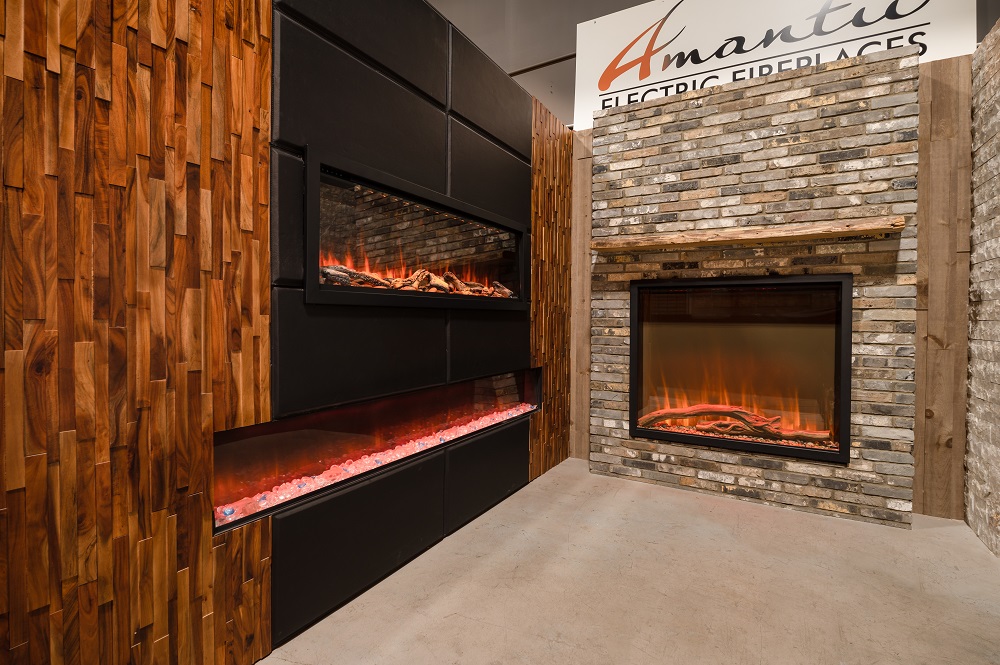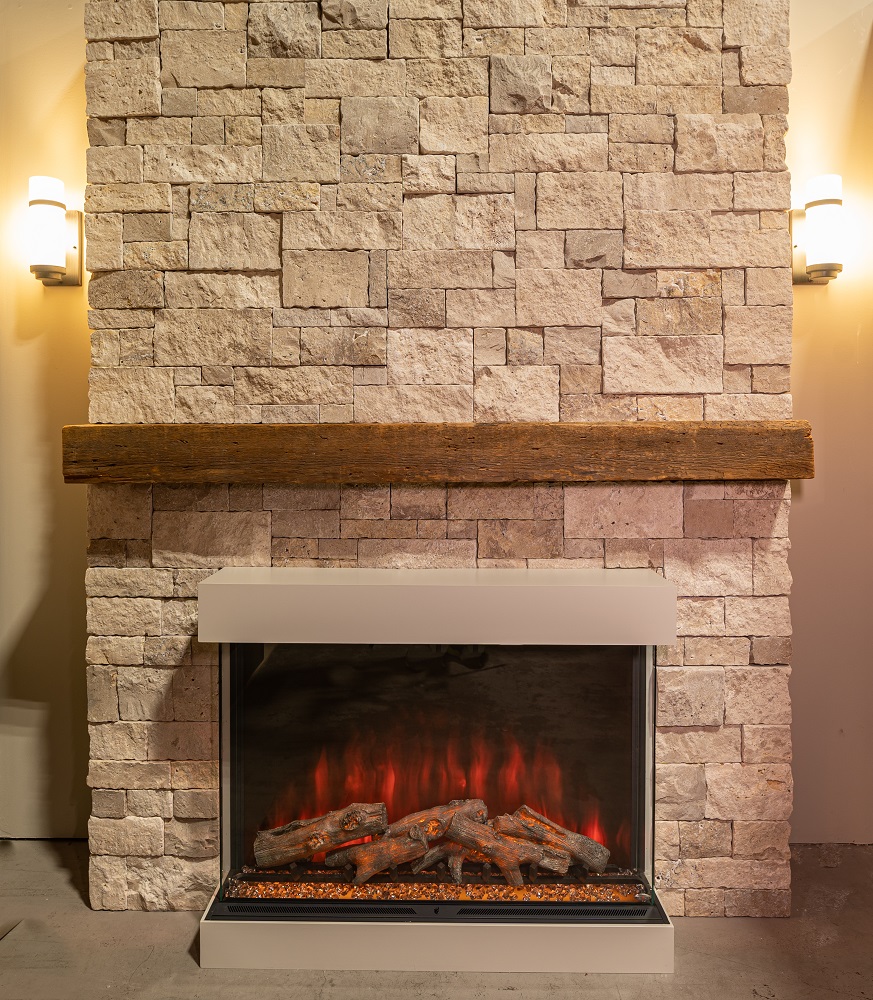If you’re a fireplace traditionalist, you likely prefer a square firebox with a classic wood or natural stone surround that incorporates a mantel ledge above the fireplace. However, floating fireplace mantels have been growing in popularity over the past few years. We think that it has to do with many homeowners’ preferences for more streamlined fireplace designs. This could also be tied to the growing popularity of linear fireplaces, where a traditional façade may not be a good fit from a style perspective. With the advent of linear fireplaces has come the desire to mount our TVs above our fireplaces, which can also lead to the need for a floating fireplace mantel for practical reasons. As fireplace experts, we have lots of tips for getting the right floating fireplace mantel for your space.
Practical Uses for Floating Fireplace Mantels
Other than design preference, there are a few other reasons that you might want to add a floating fireplace mantel to your wall. A common reason is to protect a TV or artwork from the heat that may be emitted from your fireplace. This is especially important with gas fireplaces, where the amount of heat being produced can be damaging to the TV’s electronics, or to fine art. With wood-burning fireplaces, you may need to protect the wall above the fireplace from errant flames.
If you are mounting a TV above your fireplace, you may want a floating mantel to do double duty as a shelf for electronics. This will affect the depth of the mantel you choose, as well as the placement below the TV. You also need to consider whether or not the mantel will allow excess heat to reach the electronics. For example, if the mantel shelf is not deep enough, some residual heat may affect the electronics on top.

Floating Mantels for Electric Fireplaces vs Gas Fireplaces vs Wood-burning Fireplaces
When planning for a floating fireplace mantel, you must consider the source of the flames in your fireplace. An electric fireplace has no combustion and is considered zero-clearance. Generally, this means that you can use any material for a floating mantel above an electric fireplace. Some electric fireplace manufacturers may specify a safe clearance height for a combustible mantel above an electric fireplace, so pay attention to this chart if it is included in the owner’s manual.
With a gas fireplace, there will always be a safe clearance chart for combustible mantels above the firebox. The safe distance between the top of the gas fireplace and the mantel will be determined by how far out the mantel projects from the fireplace wall. The deeper the mantel, the higher it will have to be away from the gas fireplace. There are similar considerations for combustible mantels above wood-burning fireplaces, as noted in the relevant building codes for your area.
Combustible vs Non-Combustible Floating Fireplace Mantels
A combustible fireplace mantel is one that may burn if exposed to live flames or prolonged high heat. This would include old barn beams or any other wood or MDF floating mantel. With a wood-burning fireplace, there is always a risk of live flames escaping the firebox and leaping up the wall to the mantel. However, with your gas fireplace or gas logs, you may think that there is no risk of fire. While these may not have flames that leap out of the fireplace, they can produce extreme amounts of heat on the fireplace wall. A combustible mantel may be ignited by pyrolysis, where extended exposure to very high heat causes the mantel materials to break down until they spontaneously combust. It’s for this reason that a non-combustible mantel is preferred above both wood-burning and gas fireplaces, unless you can place the floating mantel at a safe distance above the firebox. Fortunately, electric fireplaces do not produce the same extreme heat as gas fireplaces, and therefore are not likely to ignite a combustible floating mantel by pyrolysis.

What’s the Right Size for a Floating Fireplace Mantel?
In the simplest terms, the floating fireplace mantel should be at last as wide as the fireplace below and the TV or artwork above. Preferably, the floating mantel is actually wider than both by at least a few inches. If the ends of the floating mantel are going to come within 1 or 2 inches of ends of the wall, then make the mantel the same width as the wall. Otherwise, it will just look like you made the mantel too short!
How High Should I Mount my Floating Fireplace Mantel?
There are several ways to determine the best height for you floating fireplace mantel. First of all, if you need to maintain a minimum safe distance above your gas or wood-burning fireplace, then you will need to use that as your starting point. If you are using the floating mantel as a shelf for electronics, then it needs to be close enough to the TV to maintain any connections. If you have a very large TV above the fireplace, especially if the TV is wider than the fireplace, you may want to mount the floating mantel closer to the fireplace, to add more visual ‘weight’ to that part of the wall. If there are no other considerations, you can simply split the distance between the top of the fireplace and the bottom of the TV or artwork above.
Pro Tip: Remember to consider the thickness of the floating mantel as you plan out the height of the mantel. Once you figure out the ideal height for your TV or artwork, the floating mantel needs to fit in between that and the fireplace, without looking crowded. You may need to slim down the mantel to get the right balance.
Installation Tips for Floating Fireplace Mantels
When it comes to getting a rock-solid installation for your floating fireplace mantel, not all hardware is created equal. If you are mounting a reclaimed wood mantel, you will need hardware that embeds into the wooden beam, which can then hook onto lag bolts that are mounted into solid wood behind the wall. Other floating mantels, like our Stoll steel mantel shelves, are actually hollow, and they fit over a mounting bracket that is held in several places by screws that attach to solid wood behind the wall.
When mounting a floating fireplace mantel on a wall that will be covered with stone, we suggest that you mount the mantel first, then install the stone around it. This makes it easier to drill into the wall for mounting, and it ensures that the mantel has a flat surface behind it.